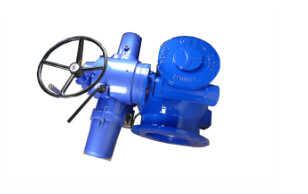
CDG
Famous industrial control product manufacturer


Download


Video


Contact
A Guide to Preparing and Inspecting Electric Actuators Before Operation

To ensure electric actuator can operate normally, improve the quality and reliability of electric valve control and adjustment, electric actuator pre-operation preparation and inspection are required in practical applications. Usually, the auxiliary devices of the electric actuator are inspected, namely the valve intelligent positioner module and the handwheel mechanism.
In order to ensure electric actuator normal operation, improve the quality and reliability of electric valve control and adjustment, the actuator must be equipped with certain auxiliary devices in practical applications. Commonly used auxiliary devices include valve intelligent positioner modules and handwheel mechanisms. The intelligent positioner module uses feedback principles to improve the performance of the electric valve actuator, allowing the electric valve to achieve precise control according to the control signal of the regulator. The handwheel mechanism is used to directly operate the control valve, so that production can still operate normally in the event of a power failure, no output from the regulator, or damage or failure of the electric actuator.
Before electric actuator putting it into operation, corresponding inspections should be carried out. First, after switching between manual and electric operation, drive the valve with the handwheel to check whether the switching is sensitive and reliable. Check whether the stroke opening action and indication of the electric valve are correct. If the handwheel cannot be rotated, the valve actuator needs to be disassembled and repaired. If the manual operation is normal and there is no interference, but the electric valve mechanism does not operate, check whether the electric actuator connector is reliable. If the valve can be driven by the handwheel, then check the electrical part. First check the actuator control mechanism, then check the main power supply and control power supply, relay, fuse, and all indicator lights and switches of the electric actuator. Check and determine whether to replace relevant parts. If there is no problem with the electrical components, then check the motor and other parts, and the problem can be solved by replacing the relevant components.
As the operating cycle slowly increases, electric actuator it also gradually enters the operating cycle. The aging problem of the electric actuator components and the wear problem of the transmission components become very serious in the later stage of operation. Motor coil aging leads to reduced insulation and unstable operation; poor motor lubrication reduces operational stability; aging of the positioning coil or position current converter reduces positioning accuracy. Problems such as the inability to adjust the electric mechanism caused by wear of the transmission components of the reducer. For these problems, regular inspections should be carried out to prevent major failures. In addition to preparing a workbench, it is also very necessary.